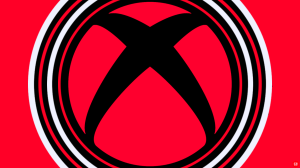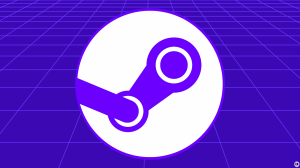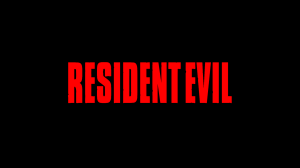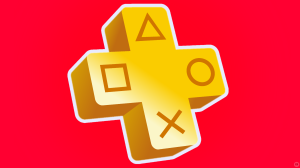Riot Games’ new League of Legends champion Akshan breaks conventions in a number of ways. He’s a marksman designed specifically for the middle lane instead of the bottom lane, he’s able to revive his teammates, and like Viego and Gwen, he’s a character released as part of one of the biggest ongoing narrative events in League’s history. On top of all that, he’s also the only champion to ever be released in not just one but four different Riot Games titles within a short window of time.
Videos by ComicBook.com
Akshan’s now available in Legends of Runeterra, Teamfight Tactics, and League of Legends with League on PC being his newest playground. Soon, he’ll be available in League of Legends: Wild Rift to complete his multi-game rollout. To learn more about the work that goes into releasing a champion this way – and if Riot would ever be up for this kind of task again – ComicBook.com spoke to Riot developers who worked on Akshan across the League family of games.
Given that there are four different versions of Akshan, we asked which parts of Akshan were most important to get right early on in his design to translate properly to all four games. Concept artist Justin Albers said Akshan’s Sentinel garb and his weapon, among other things, were viewed as most important.
“In my mind there are 4 priorities,” Albers said. “His Absolver, his own personal take on the Sentinel ‘uniform’, his body type, and his hair (on base). For his Absolver, Akshan modified a sacred and treasured Sentinel relic weapon to fit his own personal style (adding the grappling hook and boomerang). His clothing follows suit: he retains the gold and white medallion sacred geometry Sentinel swag, but adds his own vibrant colors and textiles to augment the standard. Sort of like untucking the shirt on a school uniform (if he wore a shirt). To differentiate from other heroes in the game as well as reflect his lifestyle, Akshan has a strong core and upper body strength, muscular arms, and skinnier legs, due to all the swinging he does. And lastly, because he’s a hero swinging into and out of the action, beautiful flowing hair is a must!”
League of Legends
As League players might’ve expected, development of the champion-reviving, hookshot-slinging Akshan did indeed begin in the PC version of League. Lead champion producer Ryan Mireles said League’s Champions Team started working on Akshan as a solo project before other teams collaborated.
“League PC’s Champions Team started Akshan solo, and then when we determined he was going to be in the Sentinels of Light event, which many other teams were excited to participate in, we discussed what simultaneously shipping the Champion would look like,” Mireles said. “After that TFT, LoR and WR designed Akshan based on League PC’s version.”
League wasn’t the first game to get Akshan despite his development starting there. Legends of Runeterra got him first with the other release dates staggered throughout the following two weeks. While this means Akshan technically wasn’t released at the exact same time across the games, Mireles said the varying release dates had to do with the different patch schedules for the four games.
When conceptualizing Akshan’s design, it was important to get as much right as Riot could early on in the development process. Albers said champions are often adjusted when they fully enter production, but making changes to Akshan later in the process meant much more work for everyone involved.
Despite League not being Akshan’s first home, it’s still the oldest of the four games, so Mireles said it’d make sense for League players to consider that version of Akshan to be the “main” version of the champion. Riot doesn’t look at any one version of Akshan as the main one, however, so he said it’s up to players to decide which version of the champion is the main one based on their preferred games.
Legends of Runeterra
When Akshan first came to Legends of Runeterra, he arrived as a Shurima champion in the Empires of Ascended set. Since Akshan is just one card within the set, he can’t be loaded up with his entire kit you’d find in League. Because of this, Legends of Runeterra game designer Steve Rubin and the rest of the team faced a unique challenge: They had to decide which parts of Akshan to highlight through his champion and related cards while also working on a character who wasn’t even in League at the time.
“It can be quite a challenge to capture Champion resonance when recreating them within Legends of Runeterra, especially in this case with a Champion that hasn’t quite hit the Rift yet!” Rubin said. “Overall, we wanted to translate Akshan’s roguish nature by allowing players to form their own adventure with him each game through the use of his Landmarks and the separate rewards they provide. To really capture his LoL identity, we wanted to recreate what we figured would be the most iconic aspects of his toolkit: His ‘Going Rogue’ resurrection, The Absolver, and his Hookshot. We designed these into his Champion kit through The Aboslver’s Resurrection, The Abolver and The Absolver’s Return, and Akshan’s Hookshot.”
Because of Akshan’s lone wolf nature, Rubin said it didn’t make sense for other Sentinel characters to be added alongside him. That’s where the “Vekaurans” come in, the new group of thieves who have different motives than Akshan but support him regardless.
“So we created a new subgroup for his followers, the Vekaurans,” Rubin said. “This is a group of Shuriman thieves looking to get in on the score by tracking Akshan to his next big heist – only to steal the loot themselves. They are naive to the fact that Akshan’s mission isn’t just about some gold and silver, and he’s in it for ancient Sentinels relics.”
When designing Akshan for Legends of Runeterra, Rubin said the goal was to create an aggressive champion with “nuanced decision making” that also appealed to those looking for combo decks. After seeing Akshan in action, Rubin said he hoped to see more players combining him with Demacia decks to take advantage of the striking synergies between the two and the Vekauran Bruiser.
Teamfight Tactics
Fend off the darkness with Akshan and friends! With bouncing shields and Attack Speed bursts, this trait is great as a 9, but also strong at 3 and 6 due to the shield bouncing to non-Sentinel units! pic.twitter.com/mmOTsyck2y
— Teamfight Tactics (@TFT) July 14, 2021
After arriving in Legends of Runeterra, Akshan came to Teamfight Tactics. Like the card game, the chess-like League spin-off can only utilize certain parts of a champion’s kit for its purposes. The Teamfight Tactics team opted to use Akshan’s Heroic Swing ability that allows the champion to swing towards an enemy while firing away at whoever’s closest in the process.
The result is a champion who can easily dive carries, but why not use his Going Rogue ability instead? That’s the ability in League that can revive teammates and is the one that dominated conversations about the champion when he was revealed. Matthew Wittrock, the set designer for Teamfight Tactics, said the team considered using that ability in the game but opted for something a bit more dynamic.
“‘Going Rogue’s’ revive was strongly considered, but resurrection isn’t nearly as hype or impactful in TFT as it is in Summoner’s Rift, where each player’s life matters more, and it’s actual people, rather than AI units, that get to rejoin the fight!” Wittrock said. “Heroic Swing was also an exciting fit for us; a more damage focused ability in Ranger to replace Kindred’s more utility focus, and a unique visual as well.”
Akshan also reduces targets’ armor values when attacking, but on top of that and his Heroic Swing ability, he synergizes with the other Sentinels added as part of Patch 11.15. Sentinels pass an attack speed-boosting shield to one another to keep each other healthy which is an effect Wittrock said pulls from the Sentinel vs. Viego narrative.
“The Sentinels are fighting against Viego, and do so by adding to their ranks and working as a team,” Wittrock said. “So, we liked the bouncing shield as an expression of teamwork; protecting the weak and passing the spotlight to different units at different times. This is also part of why it passes to non-Sentinels; adding more opportunities to recruit heroes in the fight against the Black Mist.”
League of Legends: Wild Rift
When a champion’s brought from the PC version of League to Wild Rift, they’re often adapted in certain ways to make them better fit in with the game’s mobile format. Akshan’s Heroic Swing ability, for example, was the champion’s most difficult move to implement given how he has to interact with terrain at different angles, Wild Rift game producer Cathy Liu said. The coordinated timelines between development teams and the demands for each version of the champion also made this project more challenging than the process of adding past Wild Rift characters.
“Getting Akshan ready for Wild Rift was far more challenging than other champions,” Liu said. “Anything we launch concurrently with League PC, or within a narrow time window from League PC, requires tight and constant coordination from every discipline from production to design. Anything that changes during development needs to be clearly communicated and reflected in both games—and our timelines and work systems differ greatly due to the needs of our specific platforms, so even something like a small costume change can impact teams like QA, animation and marketing across Riot.”
Liu added that, like many studios, developers at Riot are still working remotely. Past champion releases didn’t require such close, coordinated work between teams as Akshan did, but Liu said the Wild Rift team’s excited to see how Akshan performs when he arrives in the game on July 27th.
“All of that said, we’re thrilled with how Akshan turned out across the games, and we’re looking forward to the crazy stuff players are going to be able to pull off on dual-stick controls!” Liu said.
A One-Time Event, or Something to Repeat?
As one might’ve inferred from the anecdotes shared by the developers working on Akshan across four different games, creating this champion does not seem to have been an easy process. That could be said for any one champion, but it’s even more applicable given Akshan’s release plans and his place in the larger League of Legends narrative.
With one more game for Akshan to swing into next week, can players hope to see more multi-game champion releases in the future? Mireles said Riot will assess the results of the first-of-its-kind launch once the rollout is complete to see if the payoff is worth another coordinated champion release.
“Like anything we do, we will evaluate the results and decide if it’s something we want to pursue again in the future,” Mireles said. “Doing coordinated content like this can be pretty taxing on the teams, so we would want to make sure it was worth it before committing to doing it more or less in the future.”









